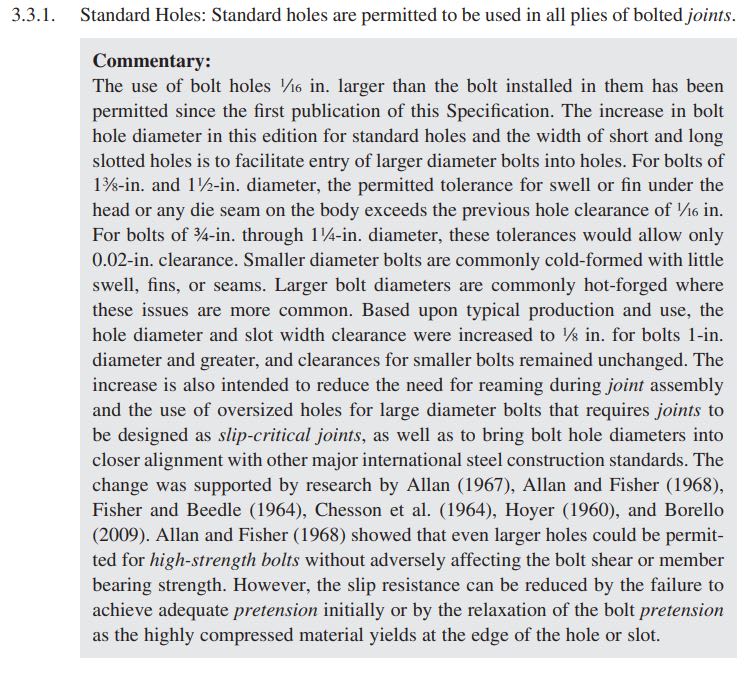Nitesh Sadashiva
Civil/Environmental
Hello all,
AISC 15th Ed. manual specifies 1 1/8" dia holes for 1" dia bolts. Accordingly, we used 1 1/8" dia holes for 1 " dia bolts for truss connections. Now EOR has commented that the additional 1 1/8" hole dia may cause bolts to slip and results in additional truss deflection. So either we have to reduce the hole diameter to 1 1/16 or we need to use SC bolts to prevent the slip. I am of not sure what EOR commented is correct. Does providing 1 1/8" hole for 1" dia bolts really create additional deflection? Then how AISC specified it for bearing bolts? Can anyone help me on this? Thanks in advance.
AISC 15th Ed. manual specifies 1 1/8" dia holes for 1" dia bolts. Accordingly, we used 1 1/8" dia holes for 1 " dia bolts for truss connections. Now EOR has commented that the additional 1 1/8" hole dia may cause bolts to slip and results in additional truss deflection. So either we have to reduce the hole diameter to 1 1/16 or we need to use SC bolts to prevent the slip. I am of not sure what EOR commented is correct. Does providing 1 1/8" hole for 1" dia bolts really create additional deflection? Then how AISC specified it for bearing bolts? Can anyone help me on this? Thanks in advance.

![[upsidedown] [upsidedown] [upsidedown]](/data/assets/smilies/upsidedown.gif)

![[pipe] [pipe] [pipe]](/data/assets/smilies/pipe.gif)